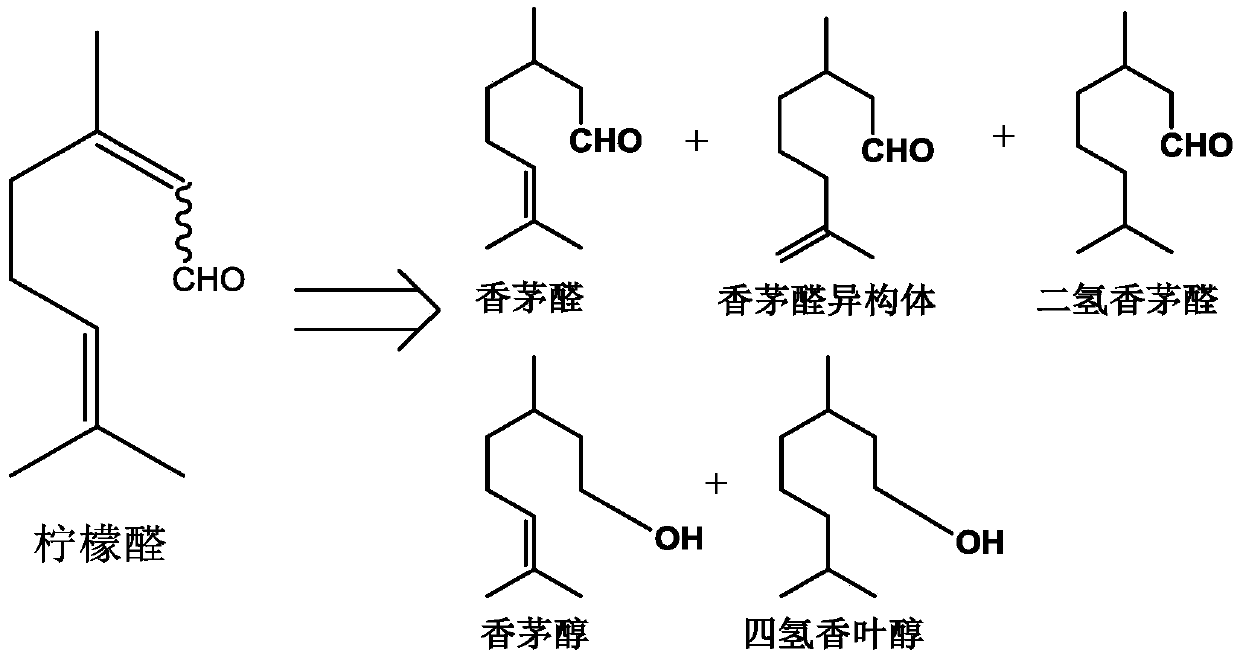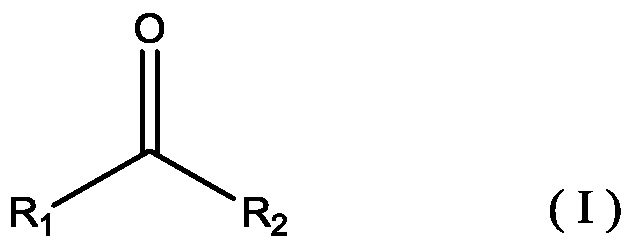Catalyst for selectively hydrogenating ethylenically unsaturated carbonyl compound as well as preparation method and application of catalyst
A technology of carbonyl compounds and catalysts, which is applied in the field of catalysts, can solve the problems of process economic decline, complicated post-treatment process, and instability of aldehydes, etc., and achieve the effects of prolonging catalyst life, uniform dispersion of metal atoms, and improving binding force
- Summary
- Abstract
- Description
- Claims
- Application Information
AI Technical Summary
Problems solved by technology
Method used
Image
Examples
Embodiment 1
[0059] Preparation of carbon-supported ruthenium precursor
[0060] a) Fully disperse 100g activated carbon in water and maintain a highly dispersed state;
[0061] b) Add 62.81g of 10%wt ruthenium chloride aqueous solution to the mixed solution obtained in step a);
[0062] c) Slowly add 10%wt NaOH aqueous solution, when the pH of the mixed solution stabilizes at 8, stop adding the lye;
[0063] d) After the active components are fully precipitated, the precipitate is separated from the water phase;
[0064] e) Subsequently, the obtained solid is dried under an inert gas, and then subjected to a calcination treatment at a calcination temperature of 500° C. for 6 hours to obtain a carbon-supported ruthenium precursor.
[0065] Preparation of Nitrogen Modified Carbon Supported Ruthenium Precursor
[0066] a) The carbon-supported ruthenium precursor is placed in an alumina reactor, and the air inside the reactor is purged with argon;
[0067] b) After the purge is completed, pass in trimethy...
Embodiment 2
[0078] Preparation of carbon-supported ruthenium precursor
[0079] a) Fully disperse 100g of activated carbon in water and maintain a highly dispersed state;
[0080] b) Add 104.68g of 10%wt ruthenium chloride aqueous solution to the mixed solution obtained in step a);
[0081] c) Slowly add 10%wt NaOH aqueous solution, when the pH of the mixed solution is stable at 8.5, stop adding lye;
[0082] d) After the active components are fully precipitated, the precipitate is separated from the water phase;
[0083] e) Subsequently, the obtained solid is dried under an inert gas, and then subjected to a calcination treatment at a calcination temperature of 520° C. for 8 hours to obtain a carbon-supported ruthenium precursor.
[0084] Preparation of Nitrogen Modified Carbon Supported Ruthenium Precursor
[0085] a) The carbon-supported ruthenium precursor is placed in an alumina reactor, and the air inside the reactor is purged with argon;
[0086] b) After the purge is completed, pass in trimeth...
Embodiment 3
[0098] Preparation of carbon supported ruthenium precursor
[0099] a) Fully disperse 100g of activated carbon in water and maintain a highly dispersed state;
[0100] b) Add 2.09g of 10%wt ruthenium chloride aqueous solution to the mixed solution obtained in step a);
[0101] c) Slowly add 10%wt NaOH aqueous solution, when the pH of the mixed solution is stable at 9, stop adding the lye;
[0102] d) After the active components are fully precipitated, the precipitate is separated from the water phase;
[0103] e) Subsequently, the obtained solid is dried under inert gas, and then subjected to calcination treatment at a calcination temperature of 538° C. for 10 hours to obtain a carbon-supported ruthenium precursor.
[0104] Preparation of Nitrogen Modified Carbon Supported Ruthenium Precursor
[0105] a) The carbon-supported ruthenium precursor is placed in an alumina reactor, and the air inside the reactor is purged with argon;
[0106] b) After the purge is completed, pass in trimethylam...
PUM
 Login to View More
Login to View More Abstract
Description
Claims
Application Information
 Login to View More
Login to View More - R&D
- Intellectual Property
- Life Sciences
- Materials
- Tech Scout
- Unparalleled Data Quality
- Higher Quality Content
- 60% Fewer Hallucinations
Browse by: Latest US Patents, China's latest patents, Technical Efficacy Thesaurus, Application Domain, Technology Topic, Popular Technical Reports.
© 2025 PatSnap. All rights reserved.Legal|Privacy policy|Modern Slavery Act Transparency Statement|Sitemap|About US| Contact US: help@patsnap.com



